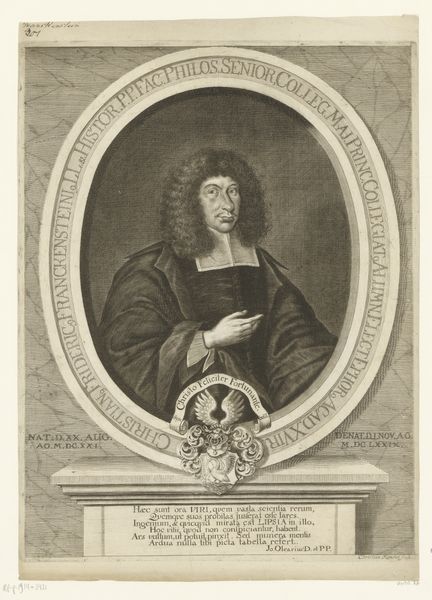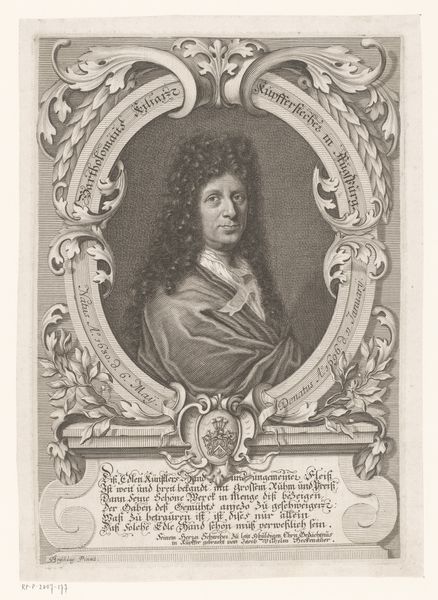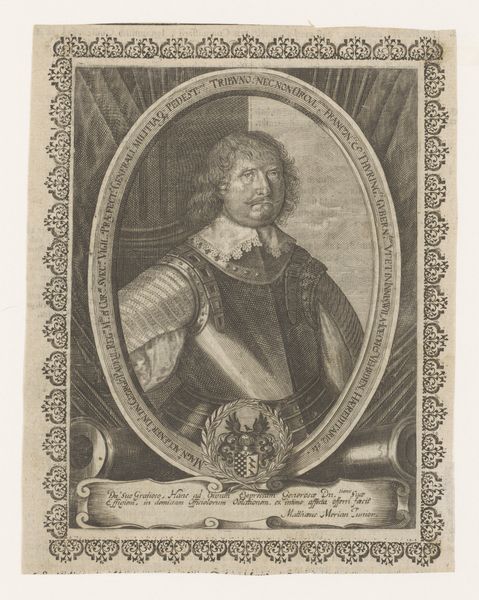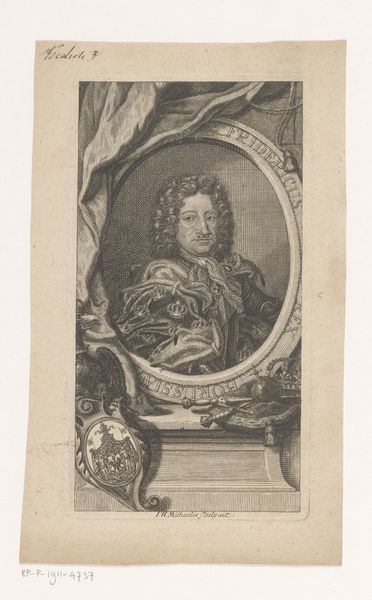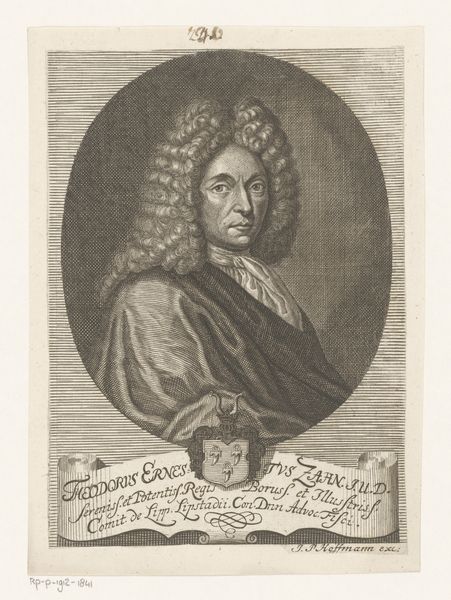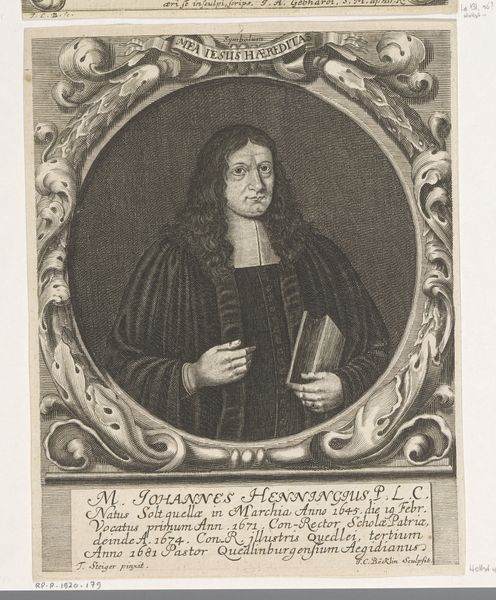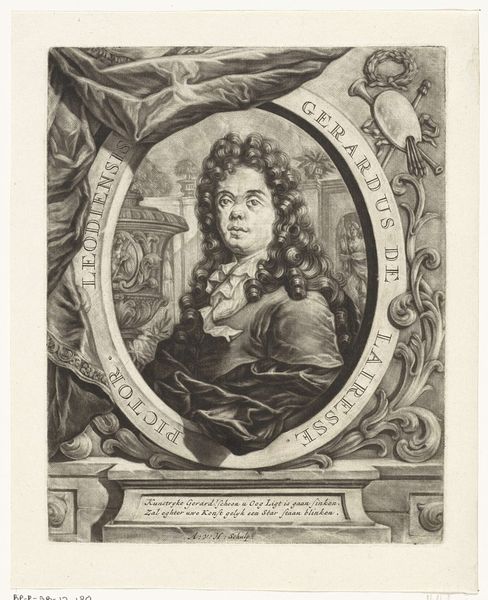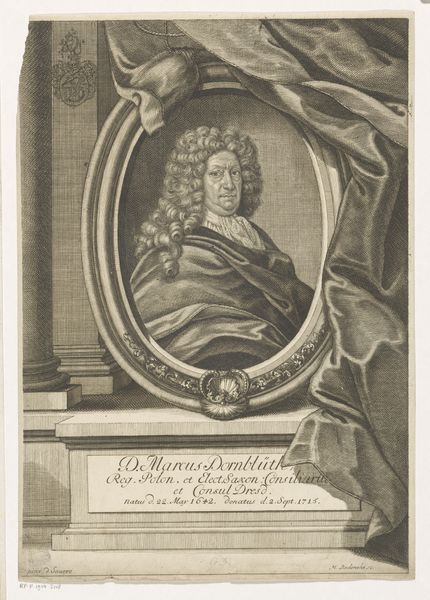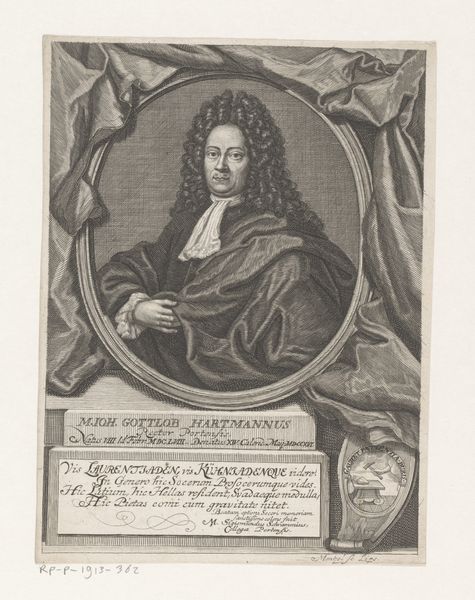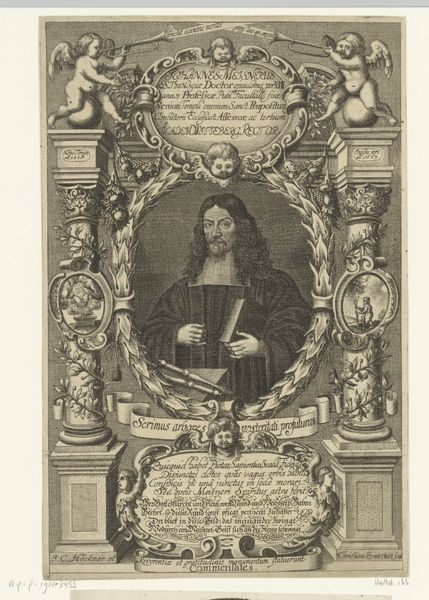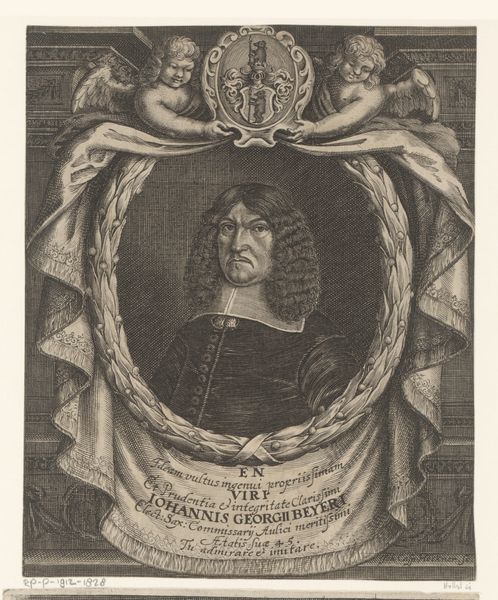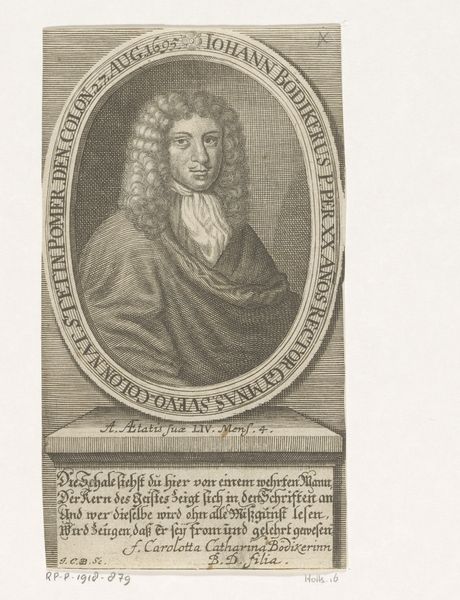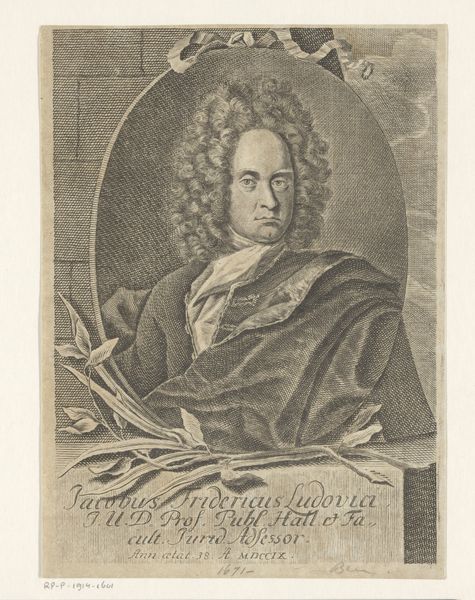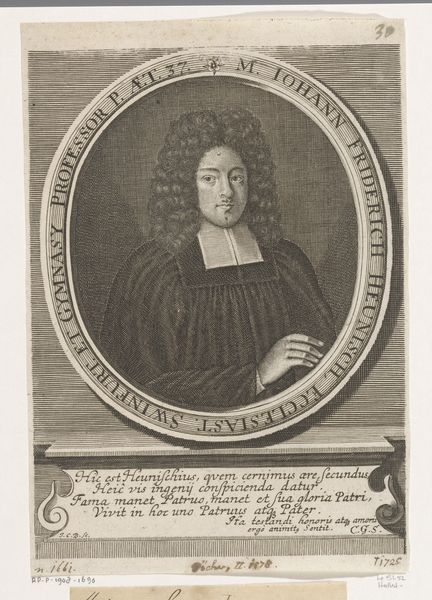
Dimensions: height 278 mm, width 173 mm
Copyright: Rijks Museum: Open Domain
Editor: Here we have "Portret van Johann Michael Sutorius," an engraving likely created around 1708. It’s a compelling image, somewhat austere. What do you make of it, with its dense detail and, notably, the prominent skull? Curator: Immediately, the stark chiaroscuro and elaborate framing device attract attention. Observe how the artist orchestrates visual hierarchy, with the sitter centrally placed within an oval cartouche, almost enthroned, yet firmly grounded through sharp value contrasts. Is there an inherent tension between presentation and message? Editor: Definitely. The portrait celebrates Sutorius, but the skull is a clear "memento mori." How do these contrasting symbols interact? Curator: Precisely. The skull destabilizes a straightforward reading of honour. Its placement calls our attention to the limits of skill or craft or status in confronting mortality. Note that the subject's gaze does not quite meet our own. It is fixed with soft indifference, directing one to his own transience. What sense does this give? Editor: It is a rather sober presentation. The skull might act as a warning, subtly undermining the subject's earthly accomplishments. Perhaps we're meant to question vanities in all their forms? Curator: In considering the interplay between its visual components, we've discerned more than first appearances reveal. It reminds one of art's complex functions to not merely to memorialise, but also to provoke critical inquiry. Editor: It's fascinating how formal analysis draws out so many potential readings!
Comments
No comments
Be the first to comment and join the conversation on the ultimate creative platform.
